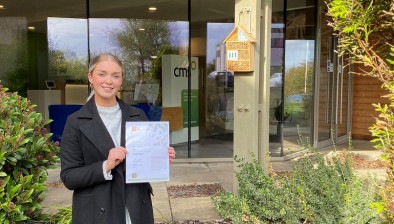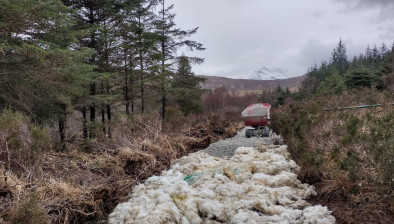And finally… Pull the wool over
A popular coastal path in Strathaird on the Isle of Skye has provided an ideal opportunity to try a sustainable path repair technique that uses locally-sourced sheep wool.
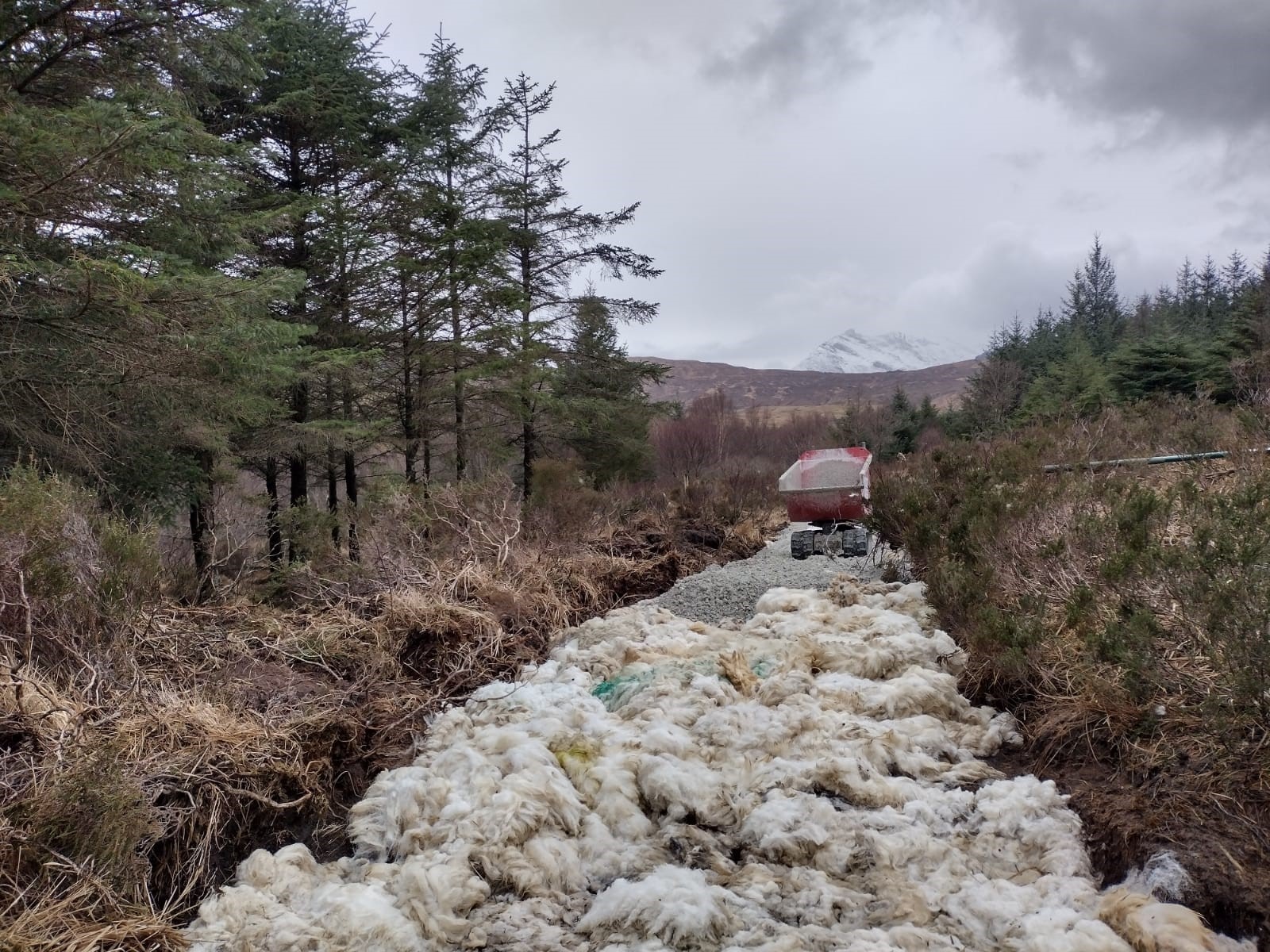
Image courtesy of John Muir Trust
The Kilmarie path is well used by the community, as well as people visiting the Iron Age fort at Dùn Ringill, and a 100-metre section had become very muddy where it crosses deep peat.
John Muir Trust Skye team member John MacRae - who is also a local crofter – repaired most of the section using gravel from a nearby quarry on top of sheep wool to hold the gravel in place. He completed the remainder using gravel on a traditional plastic membrane as a comparison.
John sourced fleeces from local crofts including from his own flock, ensuring he followed the guidelines which state that the wool must be sourced as locally as possible, as well as being in its raw state and unprocessed, to avoid introducing contaminants.
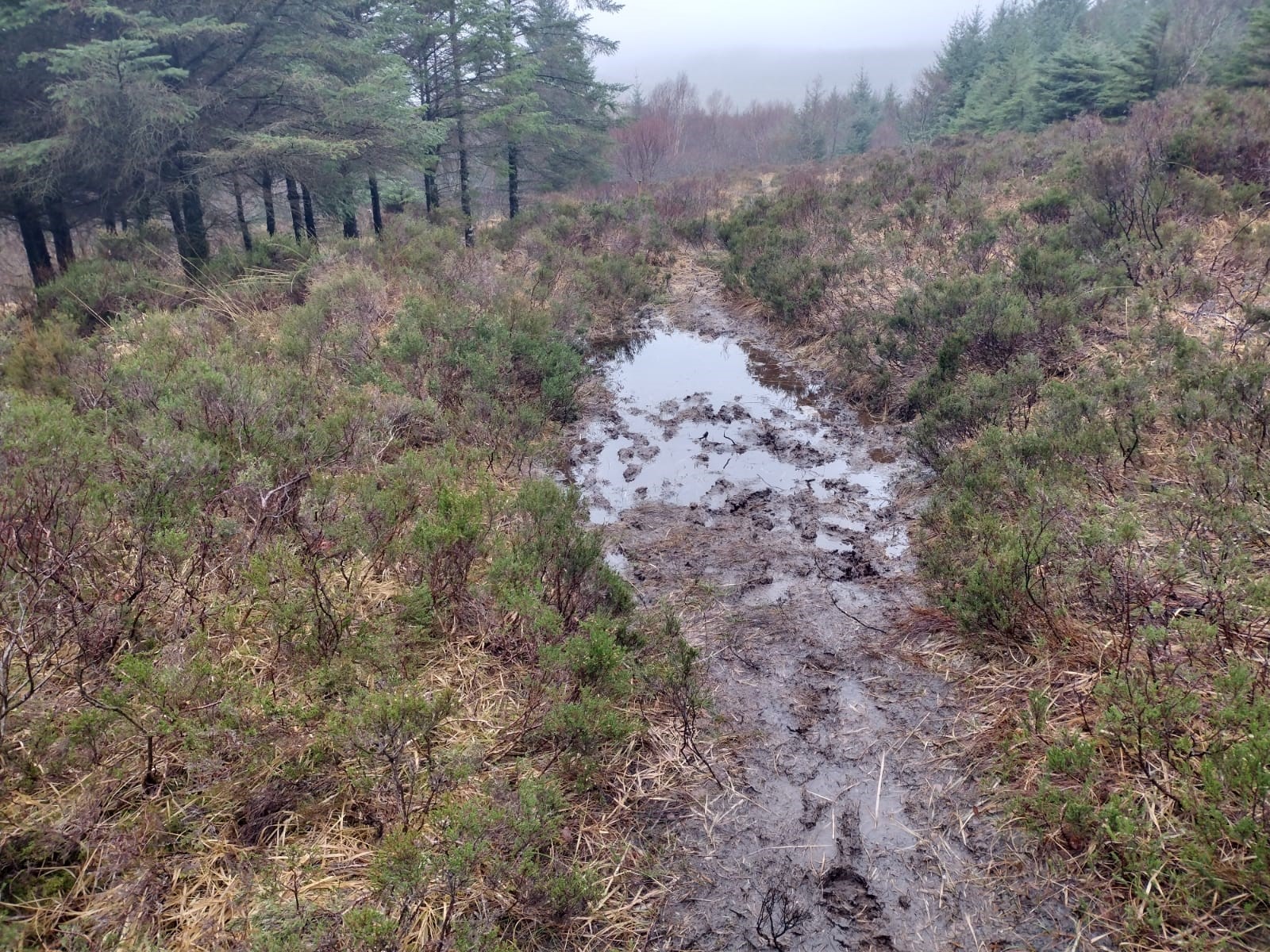
Image courtesy of John Muir Trust
For the repair, he dug a trench to hold the new surface - as he would for a regular path - but, rather than lining it all with geotextile matting, he lined 80 metres with wool. This was rolled up or folded to create a “floating path” that was then covered with stones. The wool will (hopefully) prevent the stones from sinking into the bog.
John learned a lot about the process as he worked on the repair between February’s storms.
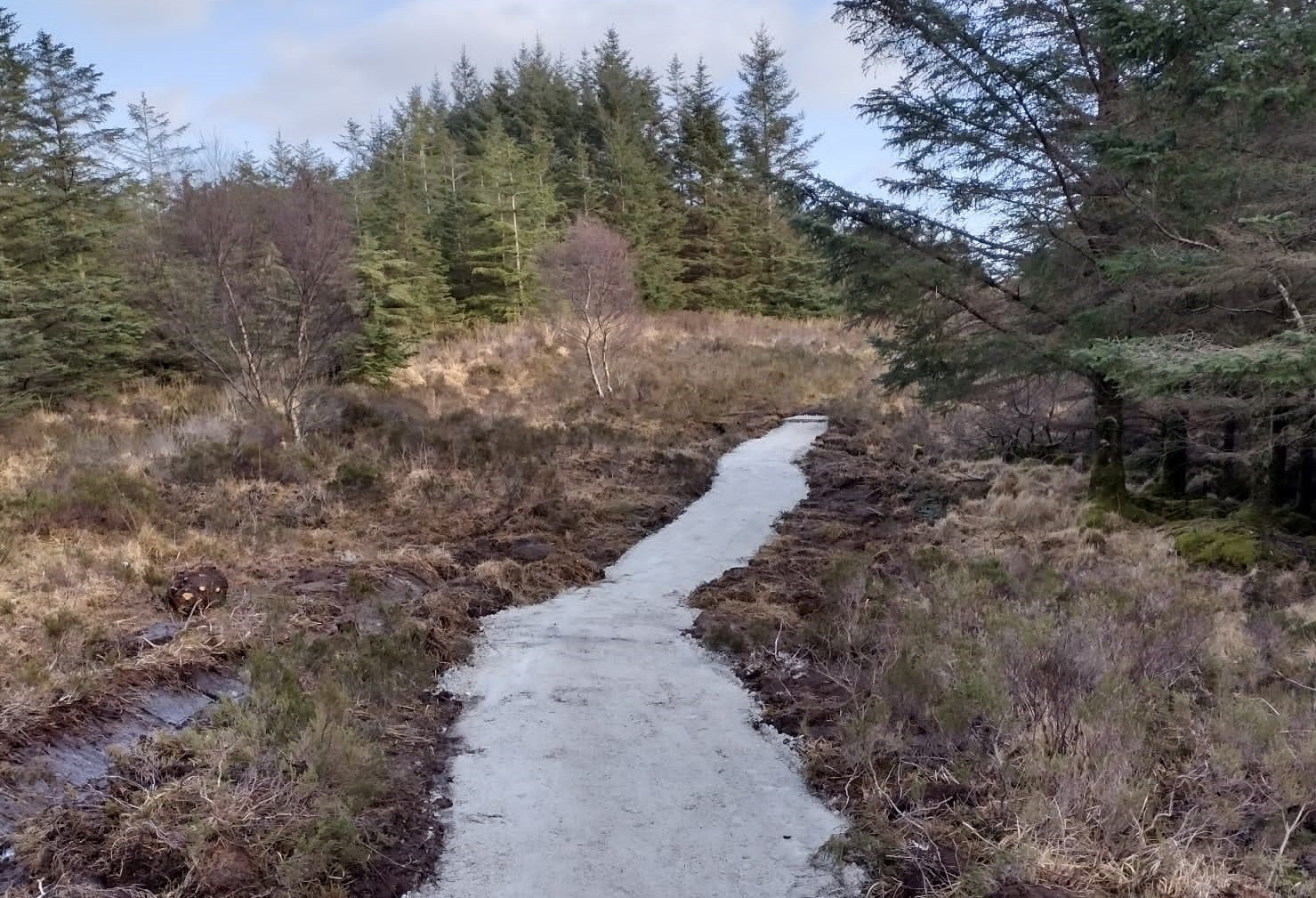
Image courtesy of John Muir Trust
He said: “The weather was truly shocking for the majority of the job, which also highlights the fact that wool can be used in very wet conditions.
“I used 300 fleeces in a 80-metre section. For the remainder, I used non-woven geo-textile matting as a comparison for the trial.
“Feedback from the community and the crofter who supplied most of the fleeces has been brilliant. In fact the crofter visited the site several times throughout the repairs and gave it 10 out of 10 when it was completed.”



















